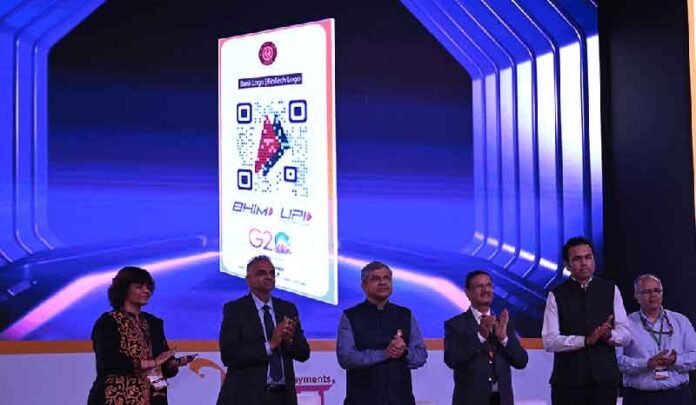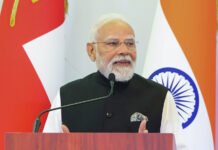INVC NEWS
New Delhi : India’s digital payment growth is skyrocketing, with UPI poised to dominate 91% of retail digital payments by 2028-29, totaling an estimated ₹439 trillion. Discover the factors driving this remarkable transformation.
Introduction
India is no stranger to revolutions—be it in agriculture, information technology, or now, digital payments. Over the past decade, the country has witnessed a seismic shift in how transactions are conducted, with digital payments becoming the norm rather than the exception. According to the latest projections, India’s digital payment growth rate is now the fastest in the world. By 2028-29, the Unified Payments Interface (UPI) alone is expected to facilitate payments worth a staggering ₹439 trillion, representing 91% of the country’s total retail digital payments. But how did India get here, and what does the future hold for this digital juggernaut?
The Rise of Digital Payments in India
The Early Days: Cash to Card
India’s journey toward becoming a digital payment powerhouse began in the early 2000s when credit and debit cards started to gain traction. However, the real momentum was sparked by the introduction of UPI in 2016, a revolutionary platform that allowed instant bank-to-bank transfers through a mobile device. With a simple and secure interface, UPI quickly captured the imagination of millions, leading to a rapid decline in cash transactions.
Demonification: A Catalyst for Change
The demonetization move in November 2016 acted as a catalyst for the adoption of digital payments. With cash suddenly becoming scarce, people and businesses were forced to look for alternatives. Digital wallets, mobile banking, and UPI became lifelines, embedding themselves into the daily lives of millions. This period saw an unprecedented surge in digital payment adoption, laying the foundation for the future.
The Role of UPI in Transforming India’s Payment Landscape
UPI: The Game Changer
Unified Payments Interface (UPI) is nothing short of a revolution in India’s financial ecosystem. What started as a platform to facilitate peer-to-peer transactions has now evolved into the backbone of the country’s digital payment infrastructure. UPI’s growth has been nothing short of phenomenal—clocking in 14.04 billion transactions in June alone, according to the organization behind its development.
But that’s just the beginning. Projections suggest that over the next 10-15 years, UPI transactions could soar to 100 billion per month. The platform’s ability to integrate with various financial services, from paying utility bills to making online purchases, has made it indispensable. Today, UPI accounts for over 80% of all retail digital payments in India—a figure expected to reach 91% by 2028-29.
The Numbers Don’t Lie
To put things into perspective, PwC India’s report, The Indian Payments Handbook 2024-29, highlights that India’s digital payment landscape has expanded more than threefold over the past eight years. The report estimates that the volume of digital payments, which stood at 159 billion in 2023-24, will grow to 481 billion by 2028-29. In terms of value, the market is expected to double, from ₹265 trillion to an astonishing ₹593 trillion.
Such growth isn’t just confined to volume. The value of transactions facilitated by UPI has also skyrocketed, growing year-on-year at a rate of 57%. This meteoric rise underlines UPI’s pivotal role in shaping the future of India’s digital economy.
Why is India Leading the World in Digital Payment Growth?
Demographics and Mobile Penetration
India’s young, tech-savvy population has played a significant role in the digital payment revolution. With over 600 million smartphone users and affordable internet access, digital payments have become increasingly accessible. Mobile penetration has been a critical enabler, allowing people from all walks of life to participate in the digital economy.
Government Initiatives
The Indian government’s push towards a cashless economy has also been instrumental. Initiatives like Digital India, Pradhan Mantri Jan Dhan Yojana (PMJDY), and the introduction of Aadhaar have laid the groundwork for a robust digital payment ecosystem. By providing digital banking access to millions of previously unbanked citizens, these initiatives have broadened the reach of digital payments.
Innovation and Ease of Use
Another factor driving India’s digital payment growth is the relentless innovation by fintech companies. The ease of use, seamless integration with various services, and the introduction of QR codes for quick payments have made digital transactions more user-friendly. From street vendors to large corporations, everyone is now part of the digital payment ecosystem.
The Road Ahead: What Can We Expect by 2028-29?
Exponential Growth in UPI Transactions
The trajectory for UPI is clear: it’s heading towards unparalleled growth. By 2028-29, UPI is expected to process ₹439 trillion in payments, representing 91% of all retail digital transactions in India. This growth will be driven by the continued expansion of the platform’s functionalities, enabling it to support a broader range of financial services.
Digital Wallets and Beyond
While UPI dominates, other digital payment methods like mobile wallets, prepaid cards, and Buy Now, Pay Later (BNPL) services will also see significant growth. However, UPI’s ability to integrate seamlessly with these platforms will ensure that it remains at the forefront of India’s digital payment landscape.
Increased Security Measures
As digital payments grow, so does the need for enhanced security. Expect to see significant advancements in biometric authentication, AI-driven fraud detection, and blockchain-based security protocols. These measures will be crucial in maintaining consumer trust and ensuring the continued growth of digital payments.
India’s digital payment landscape is nothing short of a phenomenon, with UPI leading the charge. The country’s digital payment growth rate is the fastest in the world, and it shows no signs of slowing down. By 2028-29, UPI is set to dominate, processing ₹439 trillion in payments and representing 91% of all retail digital transactions.
This transformation is not just a testament to technological innovation but also to the adaptability and resilience of the Indian populace. As the world watches, India continues to set new benchmarks in the digital economy, laying the groundwork for a future where cash may very well be a relic of the past.
So, as we move forward, one thing is certain: India’s digital payment revolution is here to stay, and it’s only going to get bigger and better!















